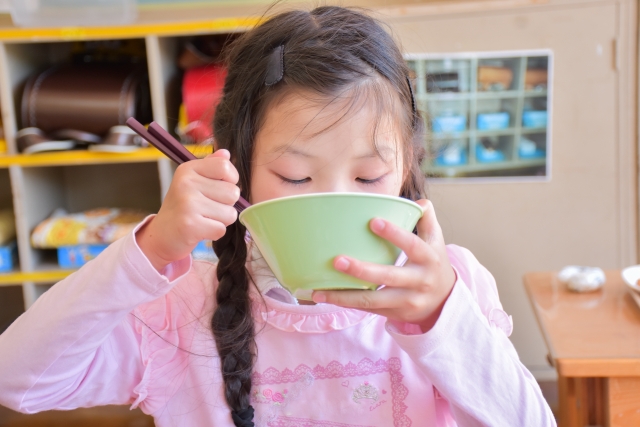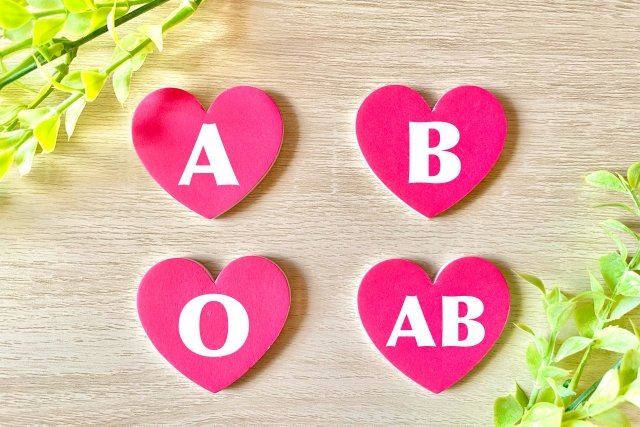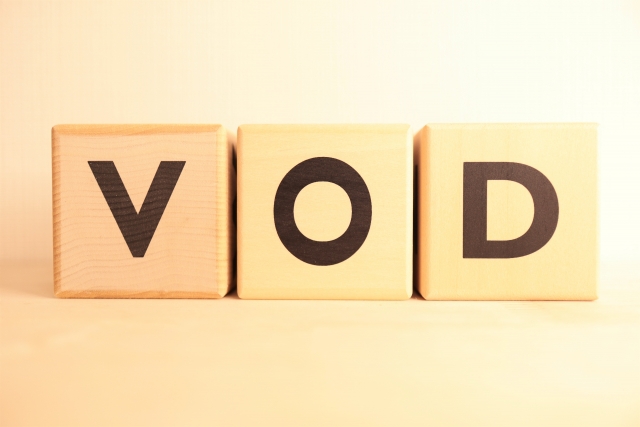You probably had school lunches at school when you were a child, but the content of these lunches varies greatly from country to country.
In Japan, a unique culture regarding school lunches has taken root and continues into the 2020s.
Some of you who have been in Japan for several years for work or other reasons may have sent your children to school, and many of you are surprised by Japanese school lunches.
Many of them are amazed at Japanese school lunches and say, “Japanese school lunches are amazing.
What is it about Japanese school lunches that makes them different from those in other countries?
In this article, we would like to explain the “greatness of Japanese school lunches”.
Click here to learn Japanese language with the best one-on-one Japanese tutoring lessons in person or online.
Contents
Common School Lunches Outside of Japan
The following are common school lunches in countries other than Japan.
The United States
In the U.S., school lunches are not eaten in the classroom, but in the “cafeteria.
Students can choose what they want to eat from hot dogs, chicken nuggets, pizza, pasta, hamburgers, and so on.
The disadvantage of this is that students can choose what they want, which can lead to calorie overload.
France
In France, as in the U.S., meals are served in a cafeteria.
The menu is a French-style meal, with courses ranging from appetizers to main dishes, side dishes, desserts, and breads.
England
In the United Kingdom, meals are also served in the cafeteria.
There are staff members who specialize in food service and prepare it for you.
Many students eat dishes such as roast beef and fish and chips.
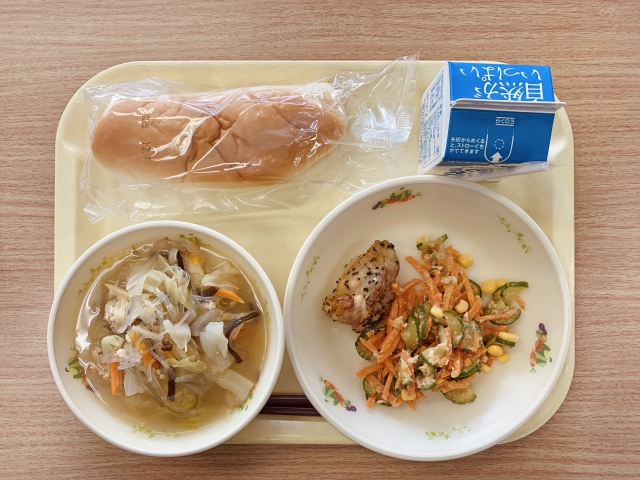
The Greatness of Japanese School Lunches
Compared to the aforementioned school lunches in other countries, Japanese school lunches are quite different.
Let us list some of them.
Eating in the classroom
In Japan, high school students eat in the cafeteria, while elementary and junior high school students eat in the classroom.
Due to the new coronavirus, people now eat “silently” (without talking) without moving their desks, but in the past they ate in groups facing each other at their desks.
As soon as the Corona virus subsides, we should be back to eating while having fun and chatting.
Serving food by ourselves
In Japanese schools, there is a “school lunch duty” section, in which children serve the meal themselves, wearing school lunch uniforms (white coats) for hygiene reasons.
The duty changes from semester to semester or week to week (depending on the school), so everyone should have experienced being in charge of school lunch at least once by the time they graduate from school.
While working as a lunchroom attendant, you will learn about preparation, procedures, clean-up, and the importance of cooperation.
Of course, you will make mistakes, but you will learn a lot from these experiences.
In other countries, there is no sense of making children clean up after meals, and children may be resistant to this when they first arrive in Japan.
However, this kind of experience will have a positive impact because it will help them develop a sense of independence.
Well-balanced menu
School lunches in Japan are very nutritionally conscious.
They are a good source of nutrition that is essential for children’s growth.
In addition to the main dish, rice and soup are served, and a carton of milk is given to each student.
Some days, though not every day, dessert is included.
There are some menus that allow for second helpings, but basically, the portion of food served is eaten without leaving any leftovers.
This reduces the risk of over-eating and becoming overweight.
Teachers eat in the classroom with the children
Since the teachers eat school lunch together in the classroom, they can give guidance on the importance of nutrition to children who have strong likes and dislikes.
In addition to nutrition, they also provide guidance on preparation and clean-up.
And most importantly, they teach “eating manners” so they can educate children who eat in a misbehaved manner.
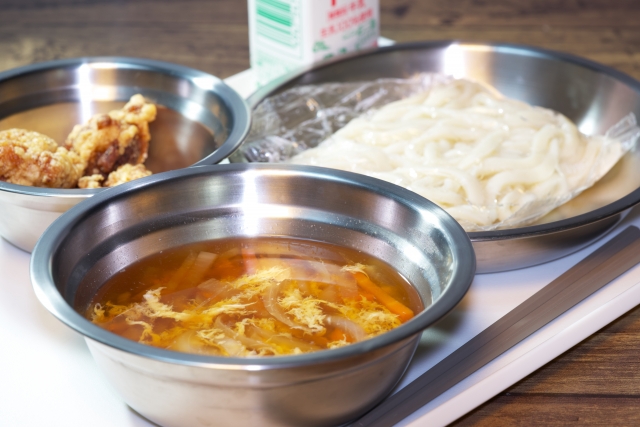
The menu changes daily.
School lunch menus are basically planned by a nutritionist, but are prepared in advance and distributed in a chart every month.
Surprisingly, the menu is never the same in a month.
Because the school lunch menu is different every day, students never get bored and are able to consume a variety of nutrients.
We also make them aware of recycling.
Milk cartons used for school lunches are rinsed, dried, and sent for recycling.
Since these tasks are also done directly by the children, recycling awareness is naturally instilled in them.
At home, on the contrary, there are more problems in terms of food.
As for school lunches, as mentioned above, the content is of a fairly high level and can be fed with peace of mind.
However, the number of dual-income households in Japan is increasing greatly, and the current situation is that children’s standard of living after they return home is declining.
Some families have children who stay at home alone, often playing too many games, eating too many sweets, and drinking too much juice.
Although children are getting great nutrition from school lunches, they often have nutritional problems at home.
Conclusion
In this article, we have explained the “greatness of Japanese school lunches.
- Eat in the classroom
- Catering by themselves
- Well-balanced menu
- Teachers eat in the classroom with the children
- The menu changes every day.
- Recycling awareness
Foreigners will be surprised at the high level of school lunches in Japan.
Those who send their children to school in Japan have basically no need to worry about school lunches.
Related article:

